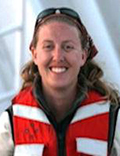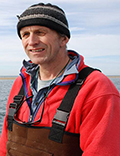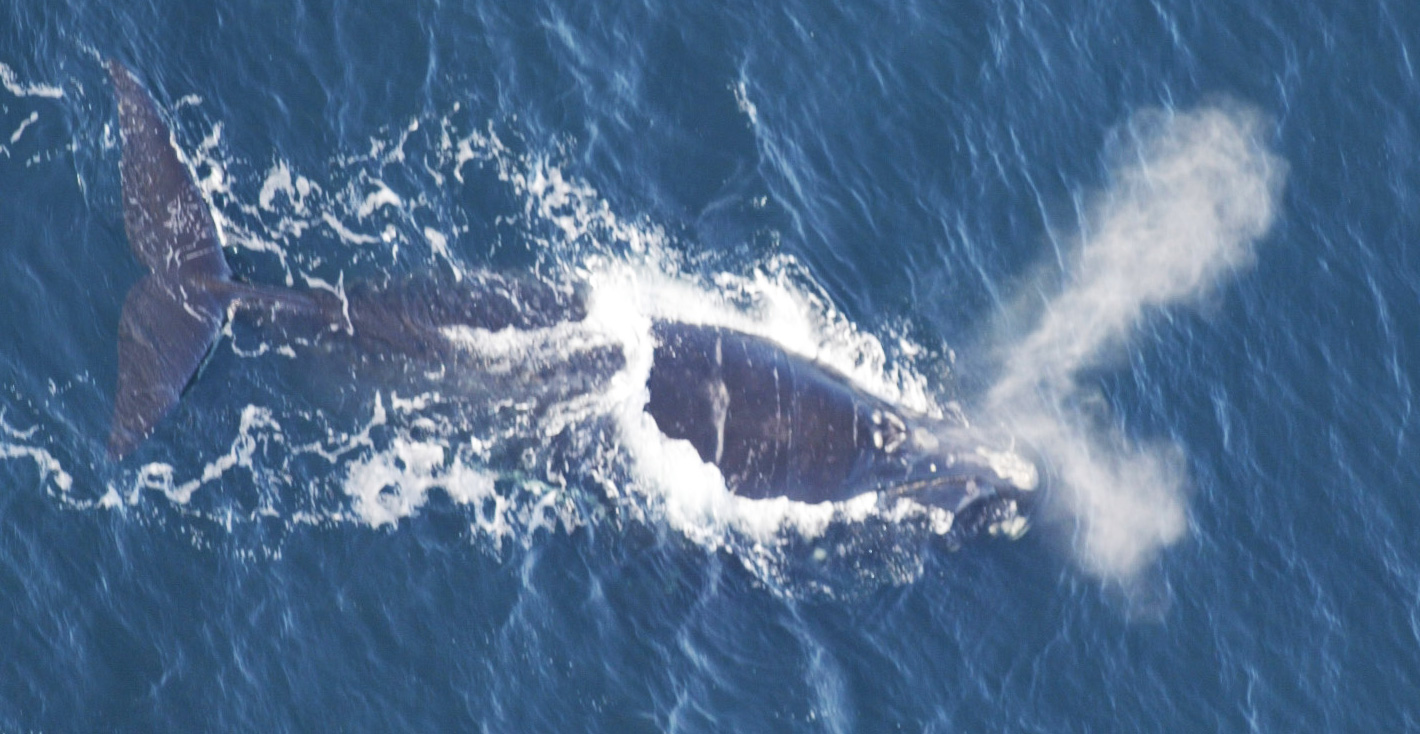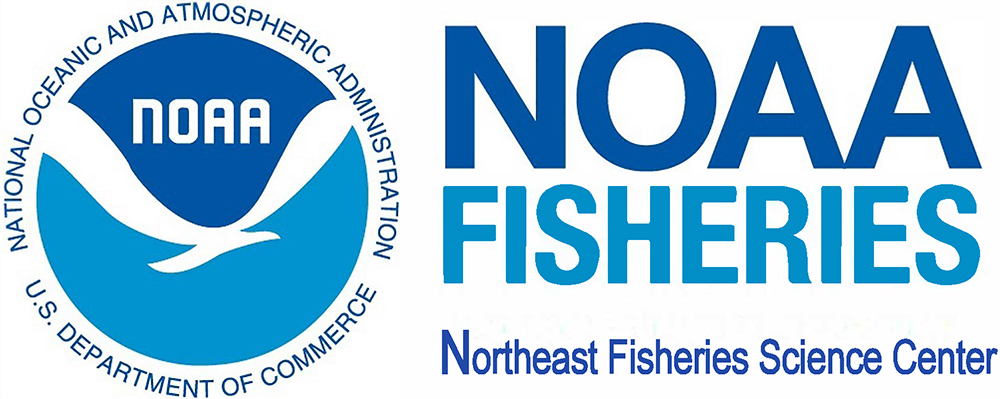Marine Mammals In Our Backyard
Background
All mammals: breathe air, give birth to live young, nurse their young, are warm-blooded, and have hair (baby whales and dolphins actually have small hairs on their rostrums (nose) when born and it eventually sheds away leaving behind small follicles). Marine mammals have a range or territory where you can expect to find them and many species migrate over long distances each year. Some whales feed in polar waters, and travel thousands of miles to warm water areas to have their young.
In this lesson, students will learn to distinguish mammals from other animals and then separate marine mammals from other mammals. They will discuss what constitutes their "backyard" and how that compares to the "backyard" of a North Atlantic right whale. They will learn about the species of cetaceans (whale, dolphin, porpoise) and pinnipeds (seal, sea lion, walrus) that can be found off Cape Cod and experiment with marine mammal photo identification. They will discover how humans impact the marine environment and marine mammals in their local area and what they can do to make a difference.
Lesson Plans
K-2
Grades 3-5
Activity Sheets/Handouts
Right Whale ID Activity ANSWER KEY
This lesson meets the following Next Generation Science Standards:
- Grades K-2:
- K-ESS3-1 - Use a model to represent the relationship between the needs of different plants and animals (including humans) and the places they live. This lesson uses google earth to illustrate how the students meet their needs and how local marine mammal species cover a larger geographic area to meet their needs.
- 1-LS3-1 - Make observations to construct an evidence-based account that young plants and animals are like, but not exactly like, their parents. In this lesson students discover how individual North Atlantic right whales can be photo identified by comparing their callosity patterns.
- 2-LS4-1 - Make observations of plants and animals to compare the diversity of life in different habitats. In this lesson students compare the species found in their "backyard" (both aquatic and terrestrial).
- Grades 3-5:
- 3-LS3-1 - Analyze and interpret data to provide evidence that plants and animals have traits inherited from parents and that variation of these traits exists in a group of similar organisms. In this lesson students discover how individual North Atlantic right whales can be photo identified by comparing their callosity patterns.
- 5-ESS3-1 - Obtain and combine information about ways individual communities use science ideas to protect the Earth's resources and environment. In this lesson students participate in North Atlantic right whale photo id and discover how this monitoring is critical to this endangered species' recovery.
Additional Resources
- Kids Do Ecology- Santa Barbara: This is a University of California Santa Barbara site, but it has some great creature pages on marine mammals you might find on the East Coast also!
- National Geographic- Blue Whale Migration Activity: This activity allows you to map blue whale migration and develop stories to explain their behavior.
- NOAA Office of Education: This resource collection on marine mammals includes valuable videos, background, activities and more.
- Sea Grant - BRIDGE Ocean Science Education: Teacher-approved marine education materials.
- Science Kids: Plant & Animal Differences Game - This game allows you to sort plants and animals into different categories such as birds, insects, mammals, etc.
- NOAA Fisheries Office of Protected Resources: Whale species information pages.
- Whale Times SeaBed: Whales, dolphins, sharks, penguins, seals and more.
- Encyclopedia of Life: Education + Learning Resources: Many resources organized by subjects and themes for both land and marine life. For both teachers and students. Learn how to use and make biodiversity cards or print out pre-made cards.
- Marine Mammal Commission: They have lessons on marine mammals for K-2, 3-5, 6-8, and high school.
- University of Alaska Southeast - 4D Virtual Whale Necropsy: You can view the virtual necropsy of a humpback whale that washed up in 2021 or view the virtual necropsy workshop for classrooms/camps.
- Northeast Fisheries Science Center- sounds in the ocean page: Listen to marine mammals sounds and view species fact sheets.
- Northeast Regional Office- North Atlantic right whale lesson: Discover the world of the North Atlantic right whale through lessons and activities on the biology, ecology, and conservation of this endangered species (Grades 6-8).
- Google Earth: Great tool to compare your and your students' local environment to that of marine mammals (we use this in our lesson).
- Explore.org: watch the gray seal pupping cam. Explore with dozens of other live cams!
- North Atlantic Right Whale Consortium Education Committee: "Face-ing extinction:" A powerpoint presentation and curriculum and teacher's guide on the endangered North Atlantic right whale.
- Explore: Lots of great resources on whales and dolphins!
- KidCyber: The basics of both toothed and baleen whales.
- NOAA Right Whale Sighting Advisory System - Interactive map of North Atlantic right whale sightings.
- NOAA Ocean Today: Learn about some of the many species in our local waters and all over the world. Fun and informative 2-minute videos from learning about the North Atlantic right whales to feeding giant octopuses!
This program is a collaboration between the NOAA Northeast Fisheries Science Center and Woods Hole Sea Grant.
Scientist Spotlight

Research Fishery Biologist
Northeast Fisheries Science Center
Allison is part of the North Atlantic Right Whale (NARW) Aerial Survey Team and helps maintain the NARW photo identification catalog.

Senior Scientist
Woods Hole Oceanographic Institution
Michael is a whale veterinarian. He is also the director of the WHOI Marine Mammal Center and has worked extensively on North Atlantic right whale recovery efforts.




